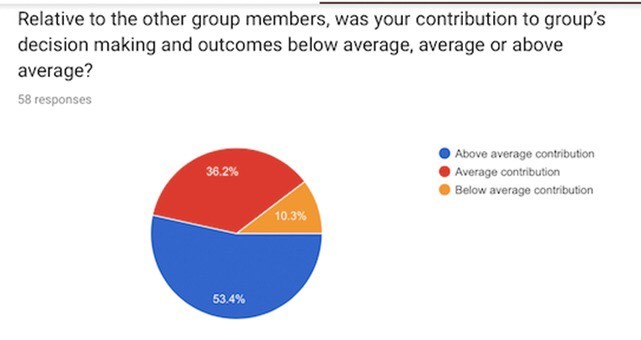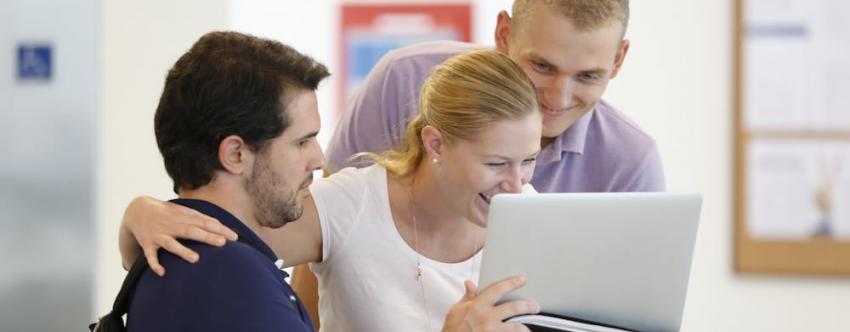Thrive—don’t survive—in Group work
One of our first, most salient memories of INSEAD is sitting around a table covered in markers and butcher paper, nervously smiling at group mates that still qualified as strangers. We were in our very first session for the Personal Leadership Development Programme (PLDP), during our first weeks on campus, participating in a form of psychotherapy: utilising art to tap into the subconscious.


We remember the train of thought:
“This is dumb, what am I going to draw? What are they going to draw? I’m bad at drawing, what should I reveal?”
Although this seemed straightforward, we were really asking these questions to prompt decisions:
- This is dumb — Should I take this seriously or not?
- What am I going to draw or reveal? — Did I understand the prompt? How will I answer it? How much should I reveal as I answer it?
- What are they going to draw? — What are my preconceived notions of who my group mates are and their priorities? Will they take it seriously or not?


This anecdote is characteristic of a common dynamic at INSEAD between individual and group decisions. There is a push-and-pull that you will constantly have to balance and navigate during your INSEAD experience, but this is also something that you will have to manage constantly in your career. We suggest thinking of this year as a laboratory where you can learn to make better decisions as an individual and in a group setting. The following is our guide of things to keep in mind as you face the challenges and reconcile the disparities between personal and collective goals.

We have synthesised some takeaways from personal experiences, core courses, and electives and a survey of INSEAD ‘18J students. We focused particularly on individual and group performance, and we tried to find correlations between extroversion/introversion and diversity on an individual’s decision making.
In our Organisational Behaviour core courses, and electives like Management Decision-Making, we learned that people tend to overestimate their ability and impact in making decisions. In our survey, we tested for links between personality types and an individual’s perception of their decision-making on group performance:
- Individual Confidence & Self-Delusion:
Finding: 89% of our survey respondents described themselves as “above average” to their groups while only 11% reported “below average.”Respondents that describe themselves as “above average” also had higher self-perceptions of their impact on group outcomes and performances.- Advice: While it is possible that at various point during P1/P2 there are asymmetric contributions to the group because of prior experience, skills and motivation, if you catch yourself thinking “my group wouldn’t survive without me,” check to ensure that you are not over-indexing your contributions, ignoring other people’s perspectives, and resorting to individualistic decision-making. We further recommend reviewing the concepts presented in Adam Grant’s book Give and Take. Grant describes how “givers” end up “gaining” more than “takers”—and by contributing more, you’ll be surprised to see that you will end up learning more through the group experience.

- Individual Confidence & Group Goals:
- Finding: Those who described themselves as “average” or “above average” in group contributions were more focused on measurable outputs and efficiency like how quickly the assignment was accomplished and for what grade. Those who described themselves as “below average” approached group work as a learning process and were maximising towards learning.
- Advice: Carefully consider both options – efficiency and learning – as an individual and take time to discuss your priorities with your group to reconcile your personal goals with the group’s goals. There will most likely be a gap, which will require you to be flexible and dynamic.
- Individual Personality & Group Goals:
Finding: We were fascinated to discover that extreme personalities—extreme introverts or extroverts—both focused on maximising efficiency,while those who fell between the poles wanted to balance efficiency with learning.- Advice: If you know you have an “extreme” personality, again, recognise that it may be important to be flexible towards other priorities in your group.
- Individual versus Group Decisions:
- Finding: 82% of those surveyed reported that group decisions were democratic and taken on consensus. 72% of respondents also reported playing the role of “devil’s advocate” from time to time. We believe this response skews higher than a random public sample because amongst INSEAD MBA students, there is a high degree of self-selection in a world-class MBA programme. Amongst these high-achievers, we notice more willingness to learn by facing challenging decisions.
- Advice: Determine whether the individual and group priority is to maintain harmony (possible at the expense of learning) or whether everyone accepts conflict if it is a means to maximising learning and growth. Assigning a group member to play the role of “devil’s advocate” can help reduce groupthink and expose you to experimentation and improvement.
- Some Additional Findings:
- Structured versus unstructured brainstorming had little perceived impact on outcomes
Diversity improves group performance: “High Diversity”—across regional, language and professional characteristics—led to higher individual and group performances across metrics like creativity and academic outcomes.
- Perceived academic results did not affect whether individuals chose to work with members of their teams again.
Management Decision-Making Group: Ryan Ramseyer, Emerson Burke-Murphy, Konstantin Synetos, Professor Emre Soyer, Fanny Erhmann, Rouzbeh Shirgiri, and Jane Chun
To summarise these results, we recommend the following process for making better decisions during your first two periods and beyond:
- Spend some time considering your individual objectives for the year—academic, personal, professional
- Actively share and discuss your individual objectives with your group
- Solicit your group members’ individual objectives and priorities for their experience at INSEAD
- Use all these data points to build a bridge between all the individual objectives and a collective objective
- Remember to be flexible
- Always view differences as an opportunity: maximising diversity in a group maximises creativity and outcomes, as supported by current academic research and the results of our survey
- Fundamentally, business is about relationships. Even if the outcomes aren’t perfect, our survey respondents recognised that the group experience is about life-long friendships and shared experiences
We hope the collective advice from our experiences, courses, and survey findings help set you up to make better individual and group decisions—this will be one of the best years for your life.





